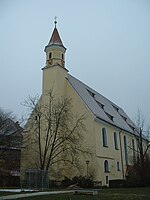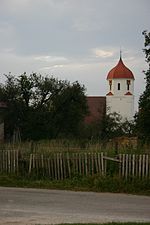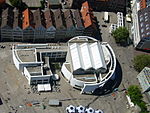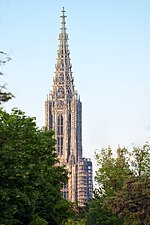Ulm

Ulm (German pronunciation: [ʊlm] (listen)) is a city in the German state of Baden-Württemberg, situated on the river Danube on the border with Bavaria. The city, which has an estimated population of more than 126,000 (2018), forms an urban district of its own (German: Stadtkreis) and is the administrative seat of the Alb-Donau district. Founded around 850, Ulm is rich in history and traditions as a former free imperial city (German: freie Reichsstadt). The neighbouring town of Neu-Ulm in Bavaria was part of Ulm until 1810. Today, Ulm is an economic centre due to its varied industries, and it is the seat of the University of Ulm. Internationally, the city is primarily known for having the church with the tallest steeple in the world (161.53 m or 529.95 ft), the Gothic minster (Ulm Minster, German: Ulmer Münster), and as the birthplace of Albert Einstein.
Excerpt from the Wikipedia article Ulm (License: CC BY-SA 3.0, Authors, Images).Ulm
Bahnhofplatz, Ulm Mitte
Geographical coordinates (GPS) Address Nearby Places Show on map
Geographical coordinates (GPS)
| Latitude | Longitude |
|---|---|
| N 48.4 ° | E 9.9833333333333 ° |
Address
Bahnhofplatz 1
89073 Ulm, Mitte
Baden-Württemberg, Germany
Open on Google Maps








